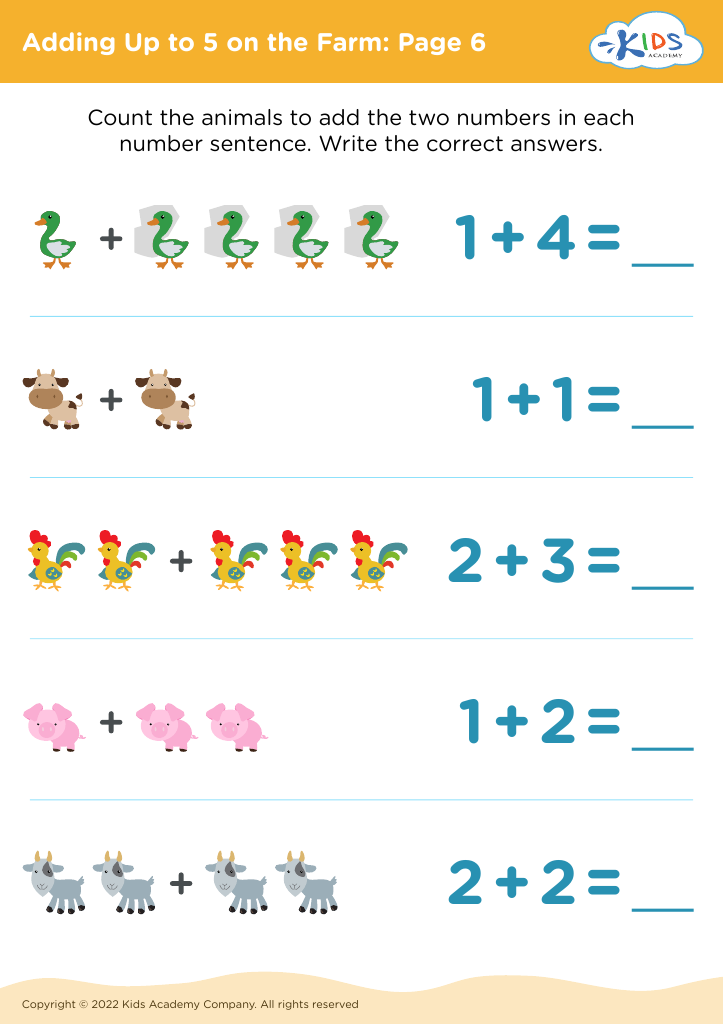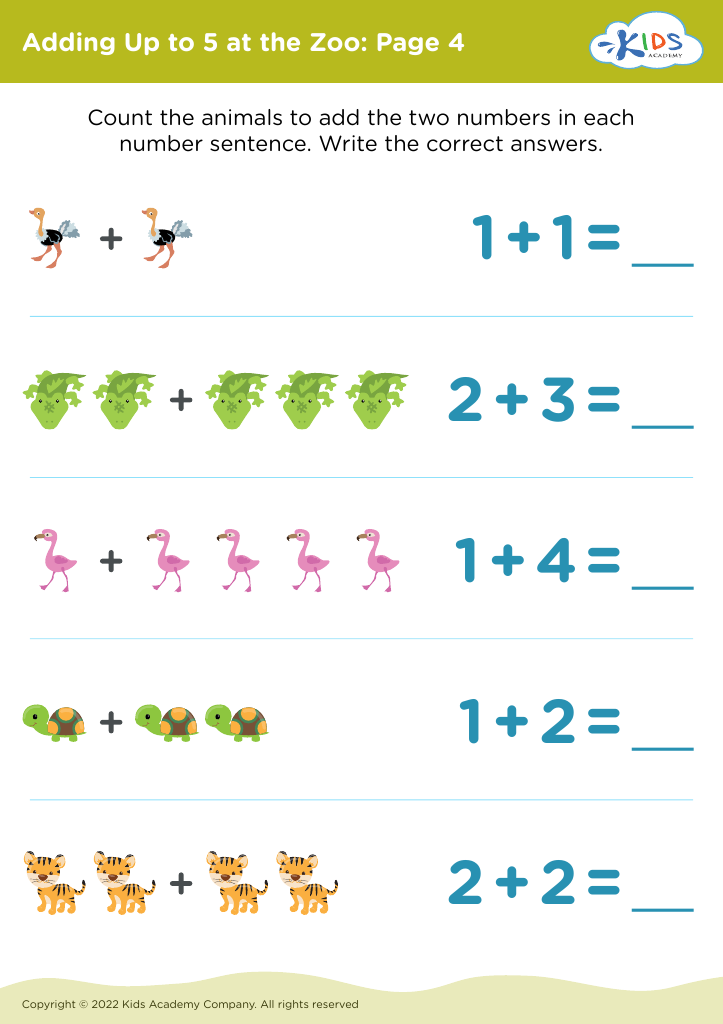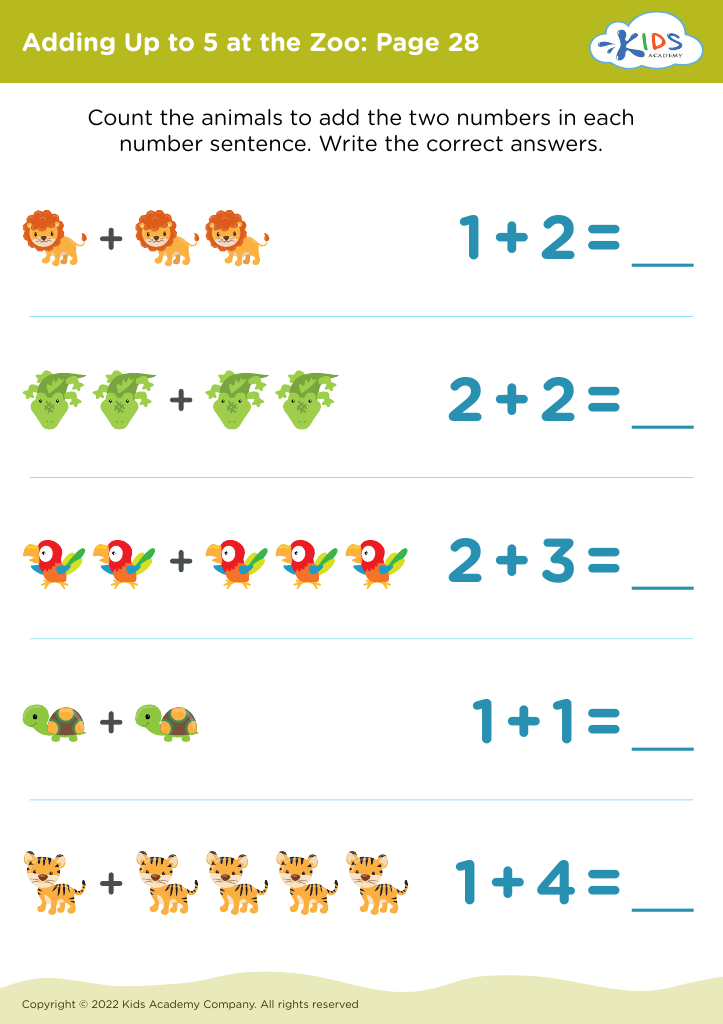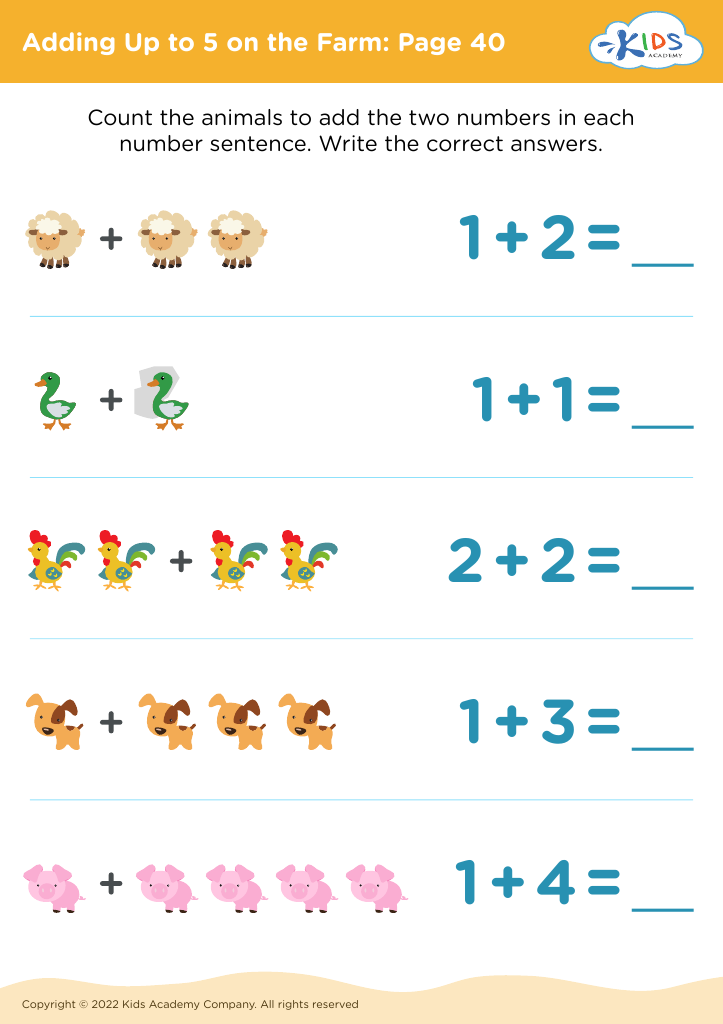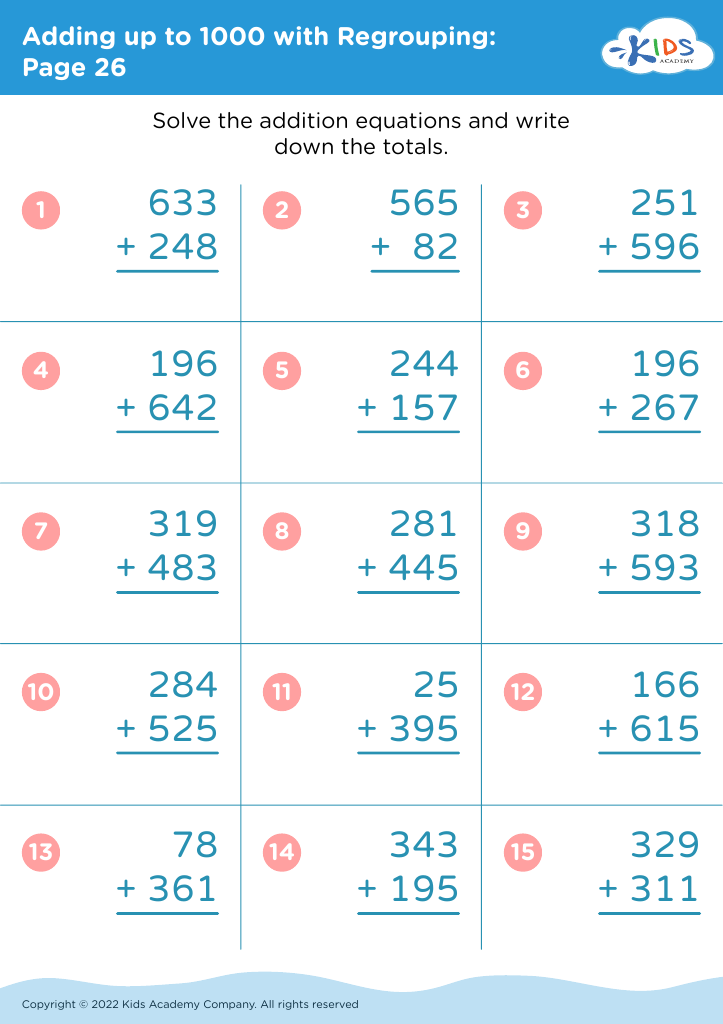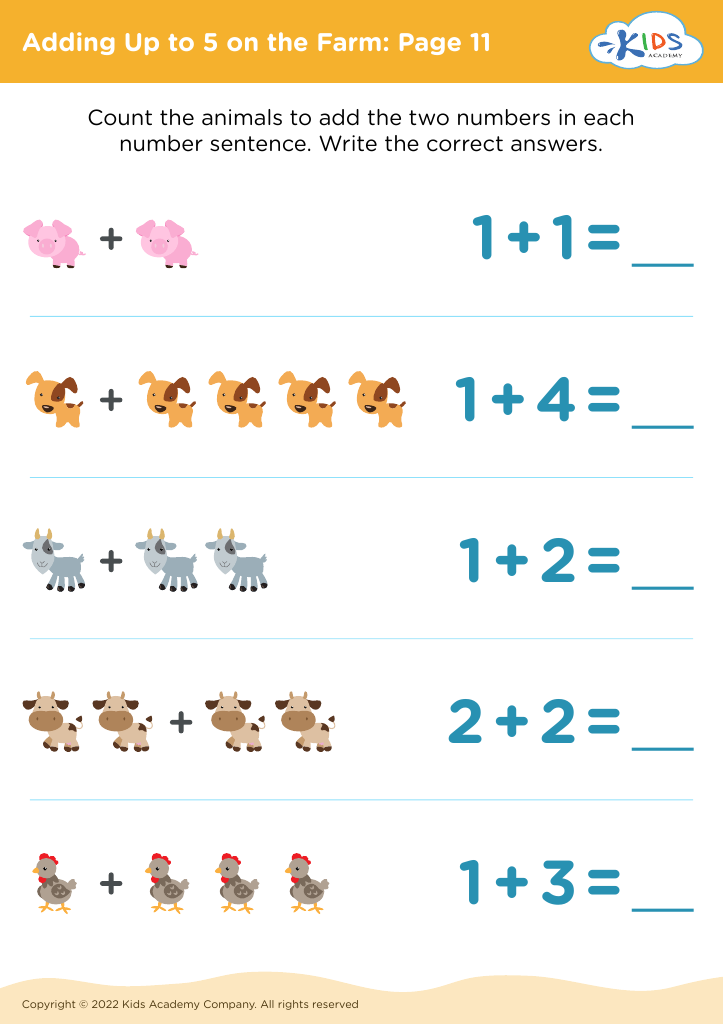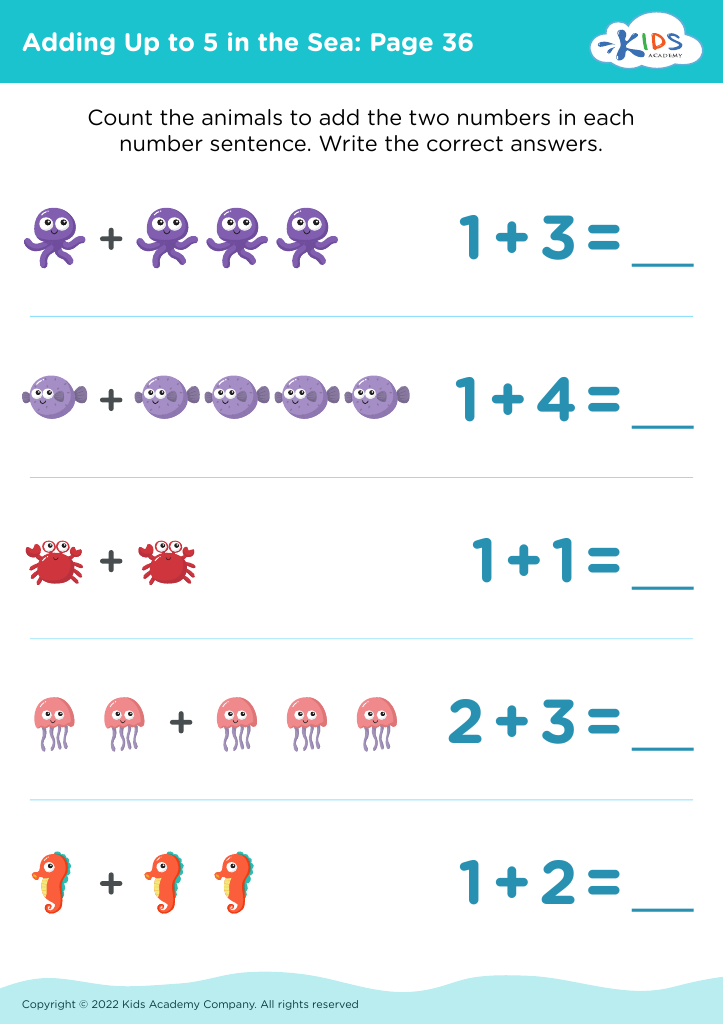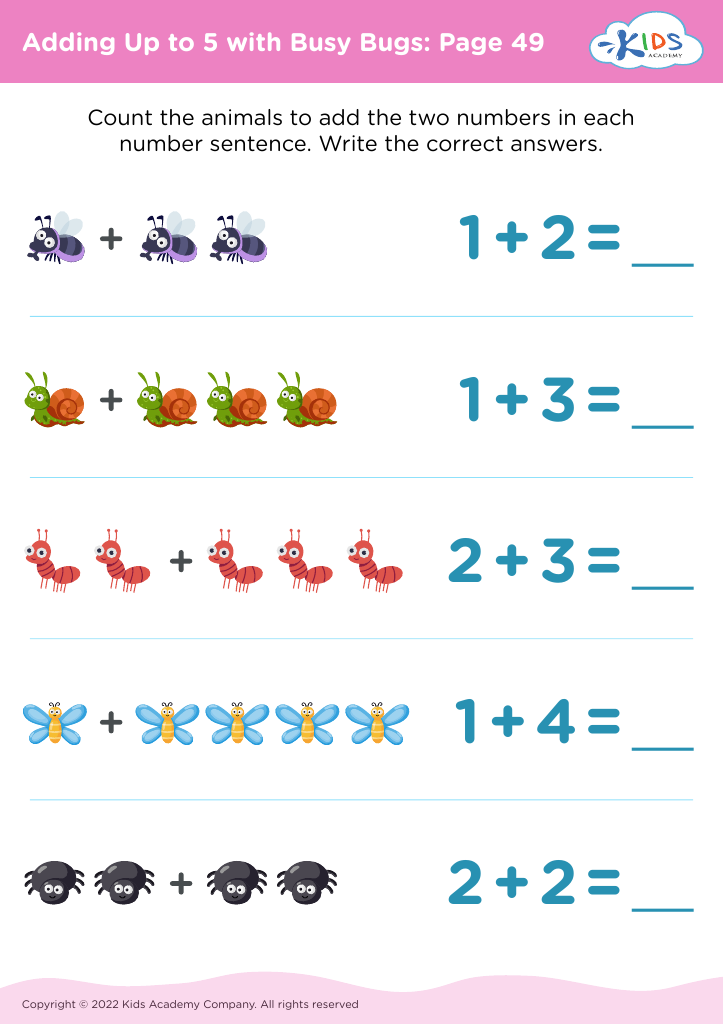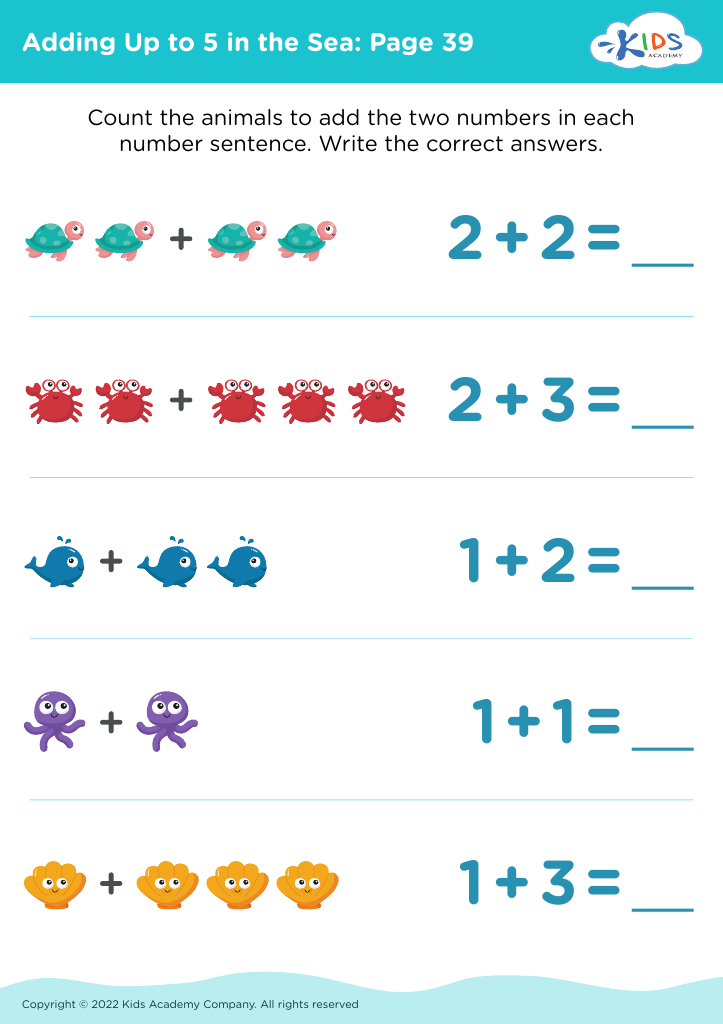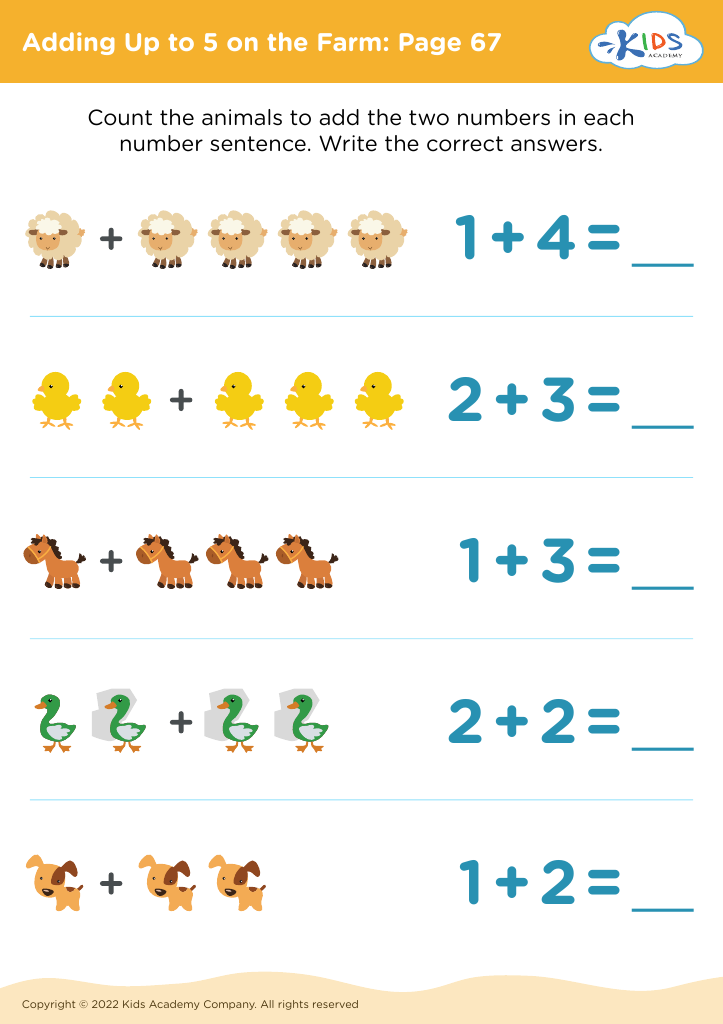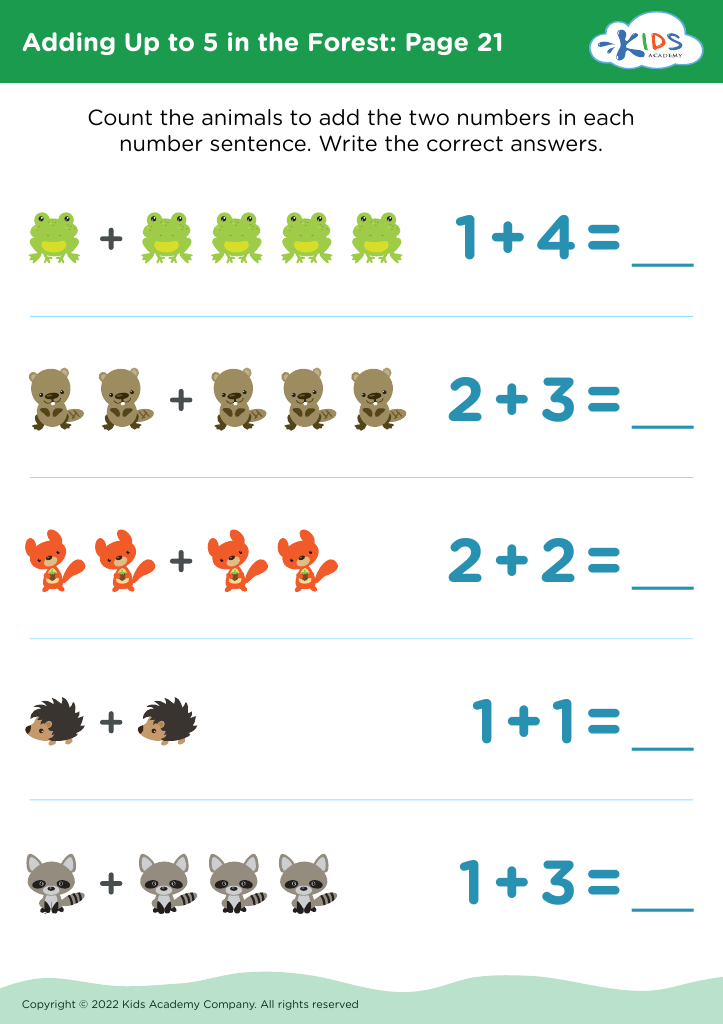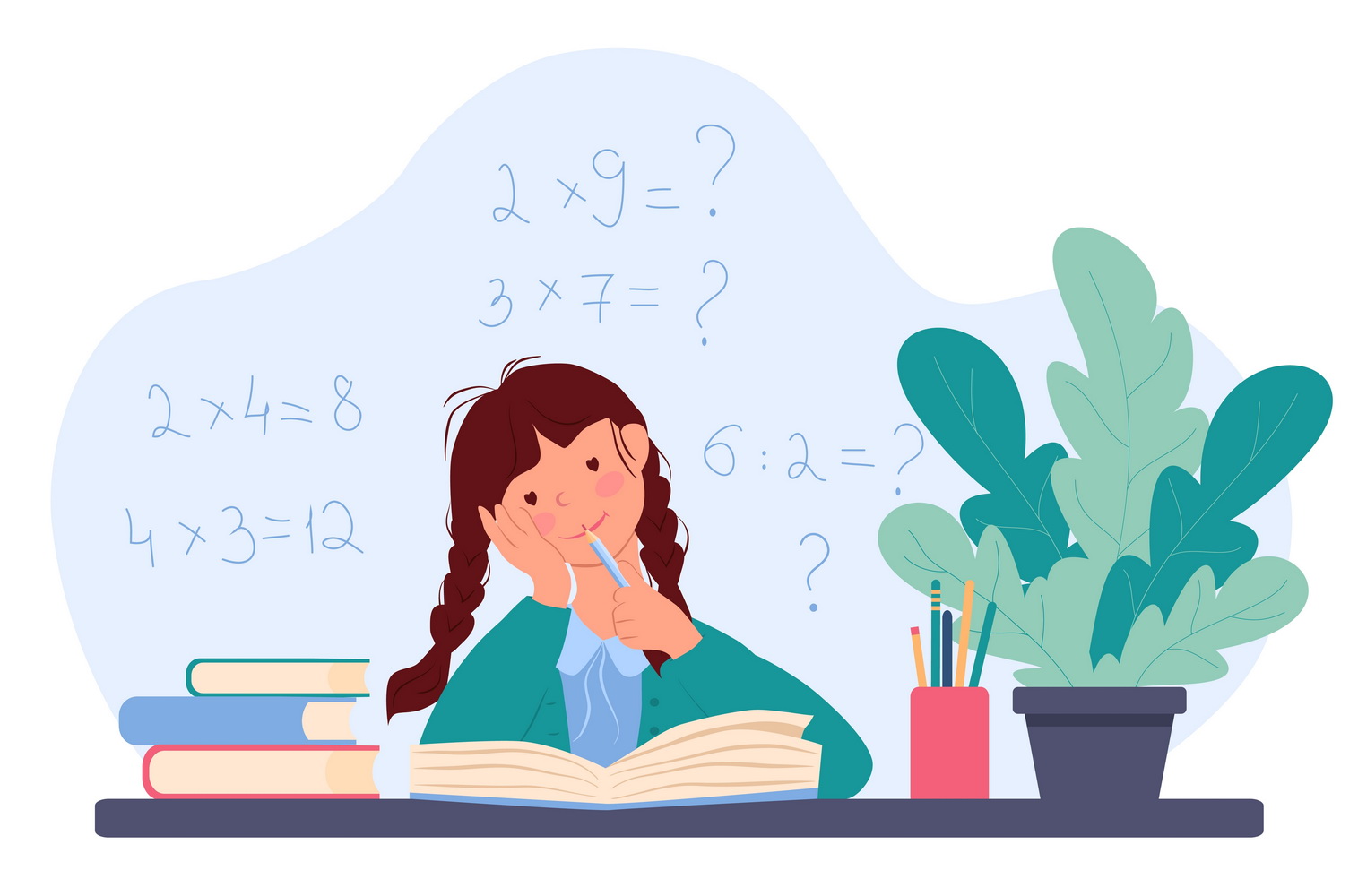Visual Learning Addition Worksheets for Ages 5-9
88 filtered results
-
From - To
Unlock the power of visual learning with our engaging addition worksheets designed for kids ages 5-9! These beautifully illustrated worksheets help young learners grasp fundamental math concepts through vibrant pictures and interactive activities. By connecting visual elements to numerical problems, children can more easily understand addition and enhance their problem-solving skills. Each worksheet provides step-by-step guidance, ensuring a solid foundation in math while making learning fun and effective. Ideal for both classroom use and at-home practice, our worksheets support a variety of learning styles, fostering confidence and a love for math in every child. Start your visual learning journey today!
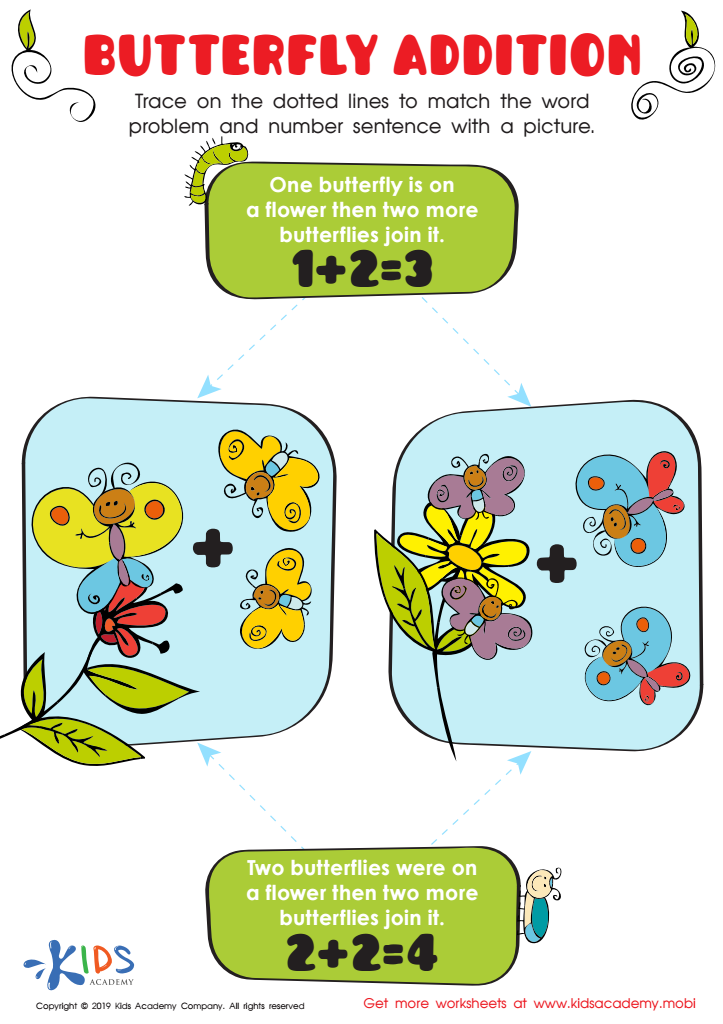

Butterfly Addition Worksheet
Visual learning plays a crucial role in teaching addition to children aged 5-9. During these formative years, young learners significantly benefit from visuals, as their cognitive development is highly receptive to images and manipulatives. Visual learning addition transforms abstract numbers into concrete, comprehendible concepts, easing the journey toward numerical fluency.
By integrating visual aids like counters, number lines, and pictorial representations, children can better understand the relationships between numbers. These tools help them visualize the process of combining amounts, enhancing their ability to solve problems independently. This method is particularly beneficial for children who are visual or kinesthetic learners, providing them with an alternative route to grasping mathematical concepts.
Parents and teachers supporting visual learning addition can also foster a positive attitude toward mathematics. Often, math anxiety develops when children struggle to understand abstract concepts, but visual tools break down complexities, making learning enjoyable and accessible. Engaging with visual aids promotes interaction and discussion, creating a collaborative learning environment that can vastly improve children's confidence and enthusiasm for the subject.
Early mastery of addition through visual learning lays a strong foundation for more advanced mathematical skills, as children are more likely to retain concepts learned in a fun, understandable way. Therefore, investing in visual learning strategies at these early stages can lead to long-term academic success and a lasting love for mathematics.
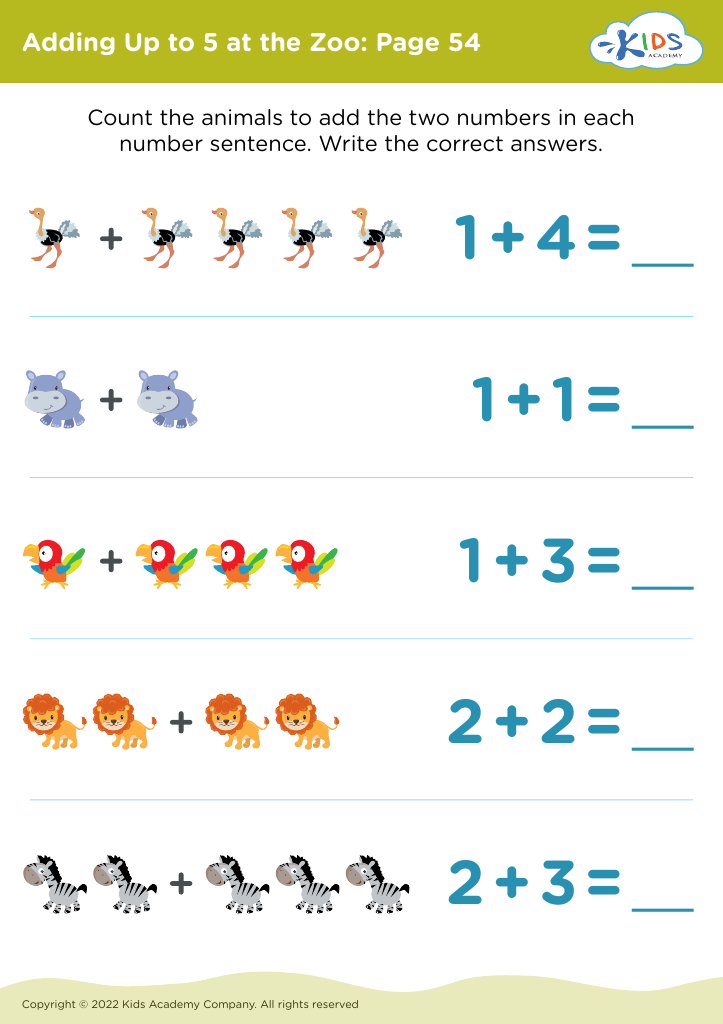


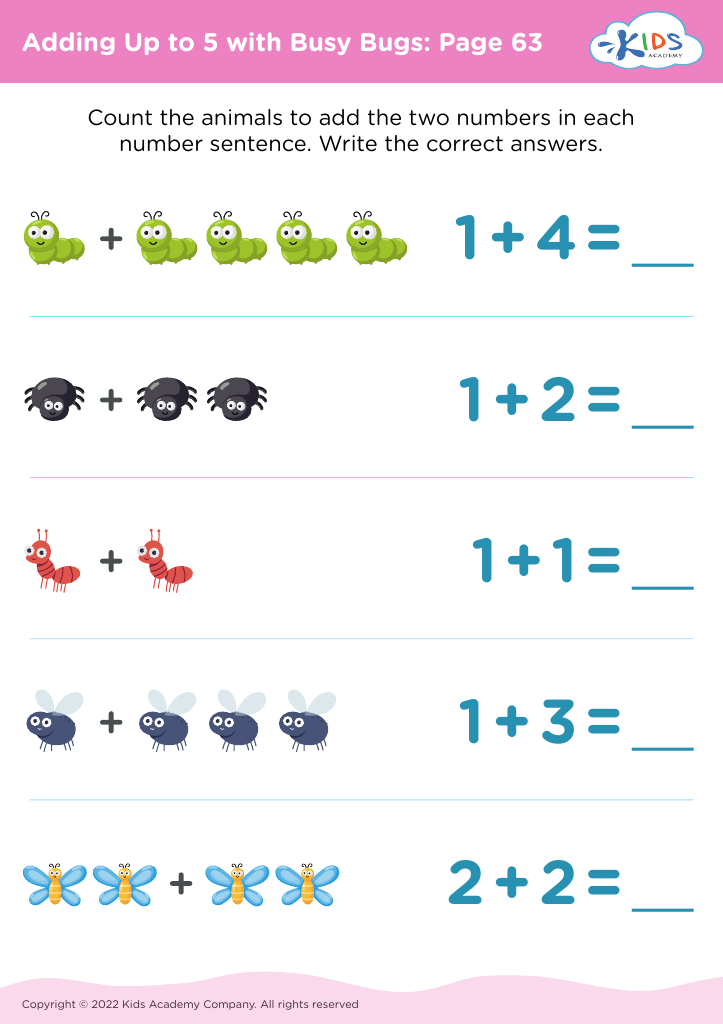
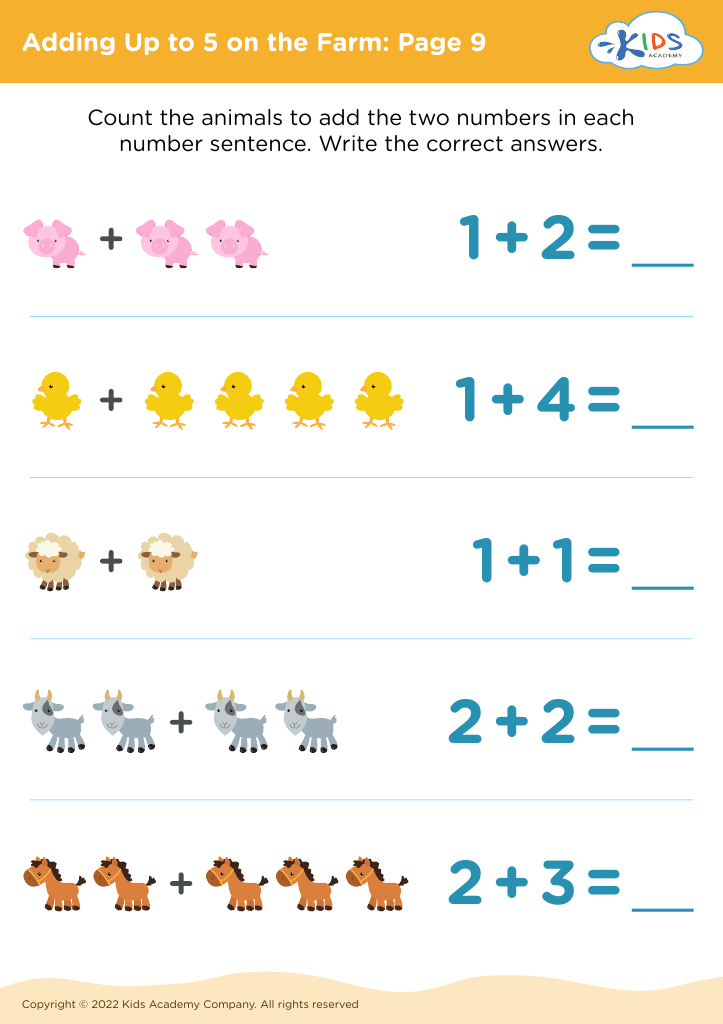


 Assign to My Students
Assign to My Students
